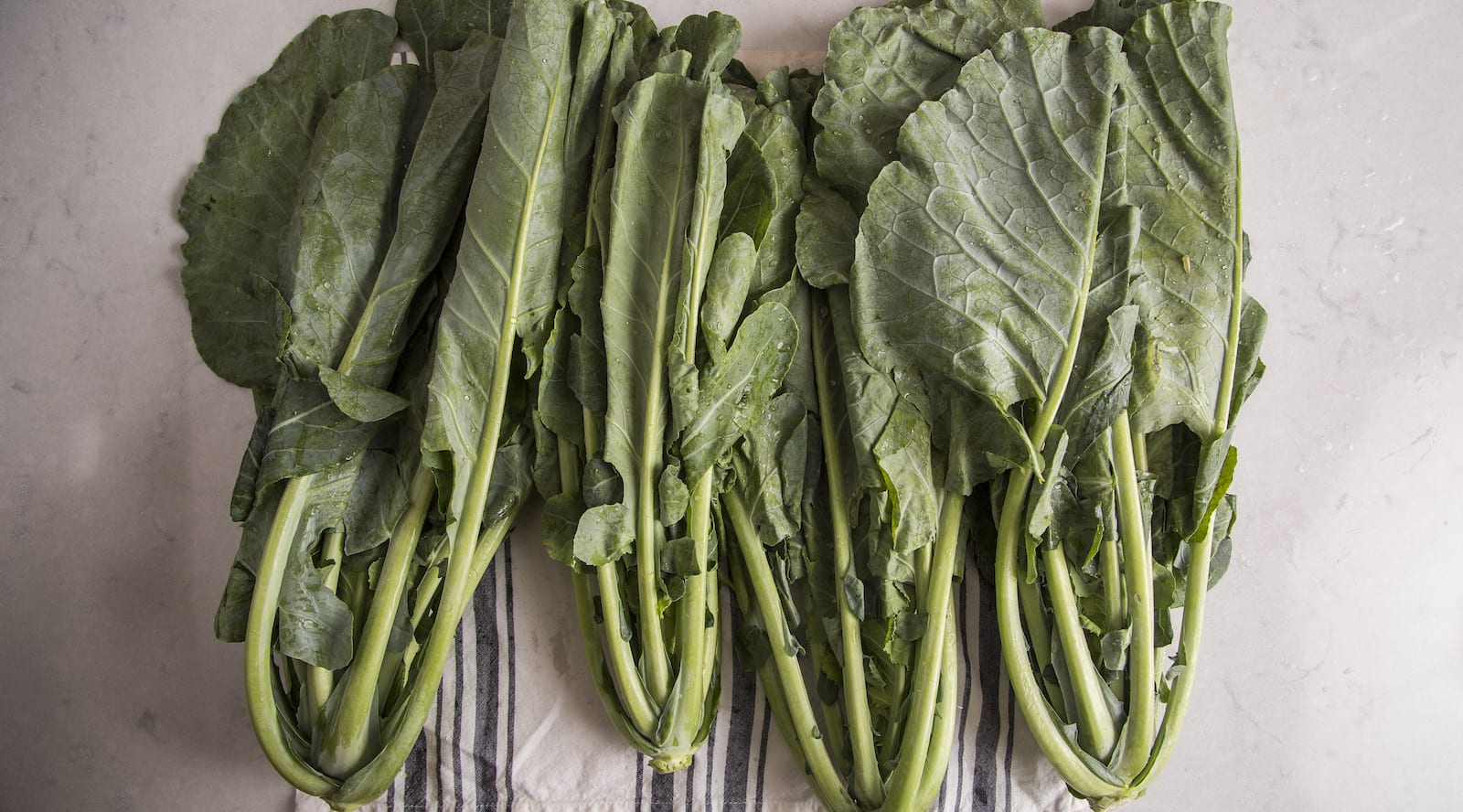Kraut Them Collards
So you’ve got a mess of collard greens. This leafy staple of the South is often stewed in large pots with a ham hock and served in its potlikker alongside a square of cornbread. The dish has warmed many a Southerner on a cold winter day, when collard plants have hit peak season.
But another preparation, collard kraut, reigns supreme in eastern North Carolina. Families gather annually to ferment the greens using recipes passed through the generations. The kraut is easily made in a stoneware crock, but any wide-mouthed, non-reactive container will do. Whichever vessel you choose, it must be sanitized.
The greens are salted, packed into the container, and covered with brine. To ensure the collards remain fully submerged, weigh them down with a heavy plate or stone, or fill a plastic bag with brine.
Cover the container with a kitchen towel or lid that you open occasionally to release trapped air. Allow the kraut to ferment away from direct sunlight for about one to two weeks in warmer temperatures, or longer in colder weather months.
If you see a frothy film on the surface during this process, skim it off with a spoon. Taste the kraut occasionally and transfer it to the refrigerator when it’s fermented to your fancy.
recipe 
1 quart filtered or bottled water
1 ounce plus one tablespoon salt
2 pounds collard greens
1 large apple
*Weighing the salt is preferred to measuring, as the volume of salt can vary with different grinds and densities
ingredients
steps
- Bring bottled water and 1-ounce salt or unrefined sea salt to a boil then remove from heat and cool to room temperature.
- Wash collard greens and cut into long, thin strips, or desired size. Wash and finely slice apple. Add collards and apple to a large bowl.
- Sprinkle collard and apple mixture with remaining 1 tablespoon salt. Mix to combine.
- Pack mixture into a large, sterilized jar or crock, leaving room for the weight. Press downward to help release liquid from collards then pour in brine to cover collards completely.
- Pour remaining cooled brine into a sealable plastic bag, seal, and place on top of collards. You may have to add or remove brine from bag to make it fit.
- Allow kraut to ferment away from direct sunlight for about 1 or 2 weeks, tasting occasionally until kraut has reached desired level of fermentation.
share
trending content
-
Chefs Heading To The Palmetto Party
by TLP's Partners -
A First Look at Fancypants | Listen
by Erin Byers Murray -
How to Build the Perfect Cheese Board | Video
by Maggie Ward -
5 Things to Do in Bath County, Virginia
by TLP's Partners -
Bearing Fruit at Big Apple Inn
by Erin Byers Murray
More From Culinary Class
-
How to Build the Perfect Cheese Board | Video
-
A New Take on Chocolate Royale
-
Two Scoops of Banana Pudding Ice Cream
-
How to Make Pani Puri with Mister Mao | Video
-
How to Make Kolaches with Joy the Baker | Video






Comments 4
How much apple
Hi Earlean, you’ll want to use 1 large apple to make this recipe. Enjoy and let us know how it turns out!
Cheers!